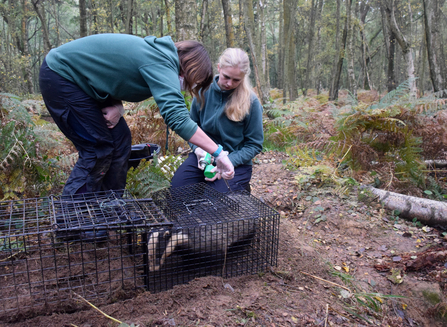Another successful round of badger vaccinations took place this June and July, with the preceding weeks being given over to the preparation work of training the badgers to come for nuts and getting them accustomed to the specially designed badger traps.
Over time we have developed a detailed map of the areas that badgers frequent, although from season to season there is always some variation in this.
A survey searching out active signs, such as fresh digging, piles of recently changed bedding by a sett or fresh latrines (piles of poo) reveals what the current population is up to.

